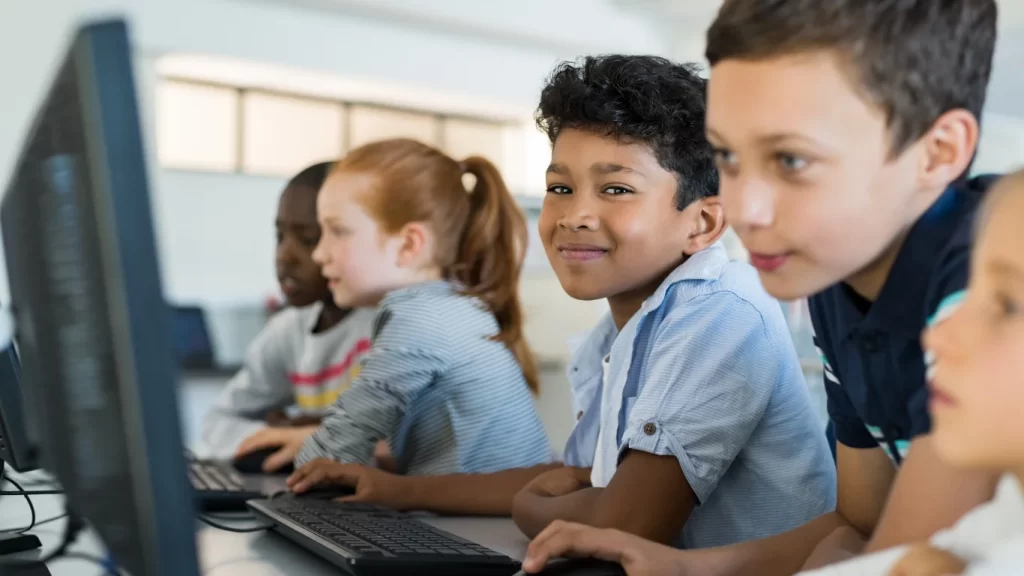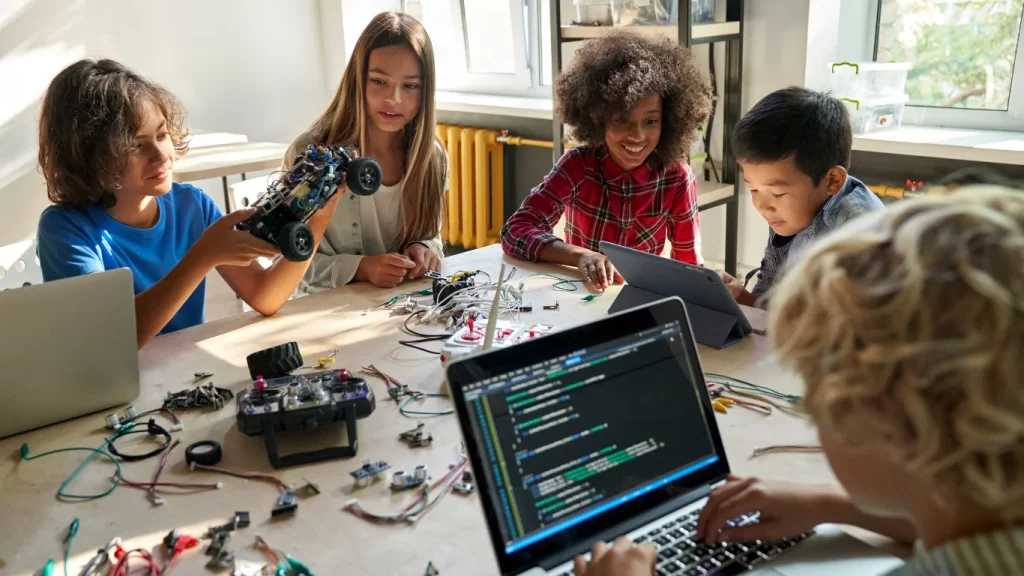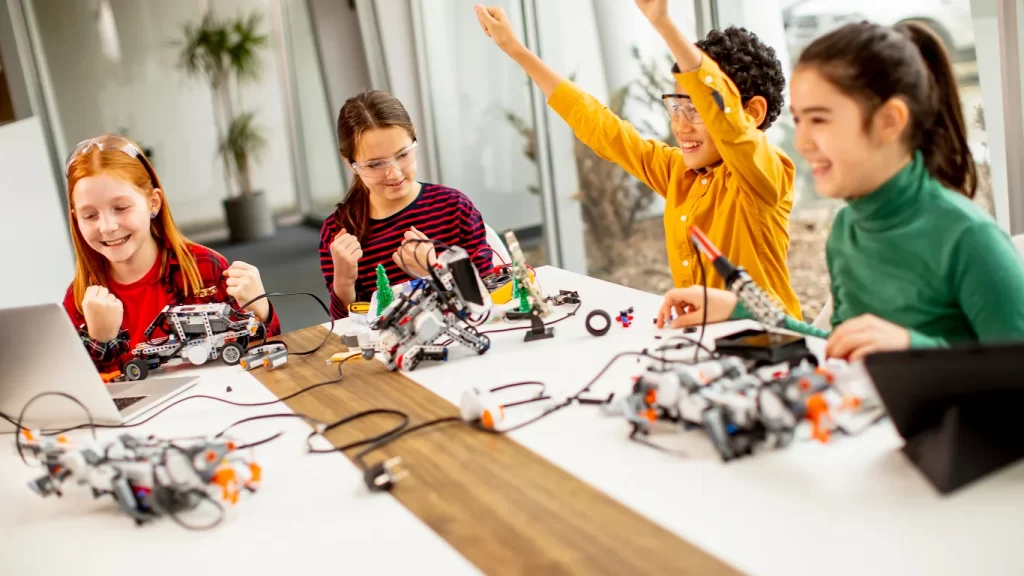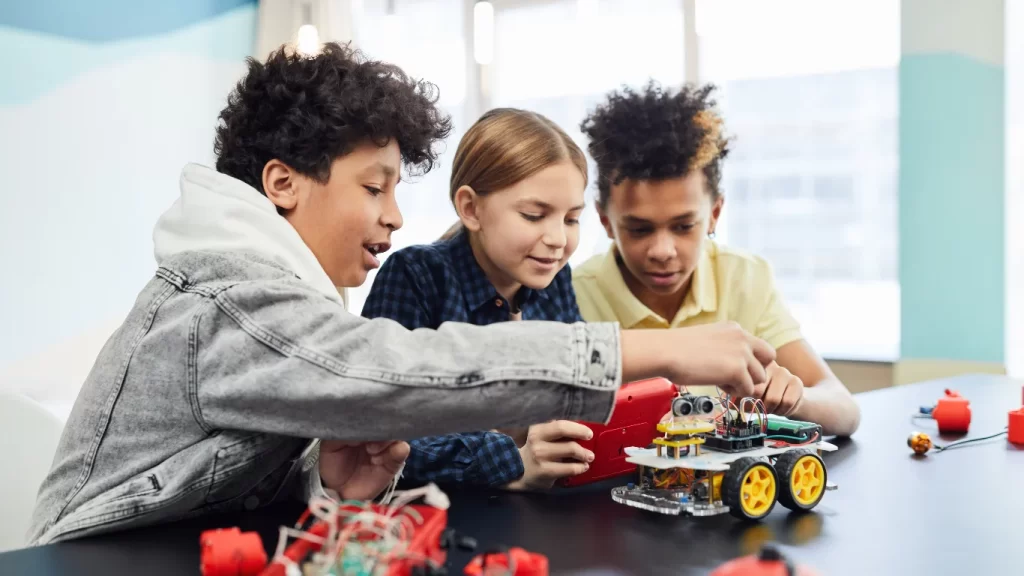In this digital age, coding toys for kids is an essential educational tool. These toys are more than just playthings; they help young learners develop essential skills by making coding concepts engaging and tangible. By using interactive coding toys, children not only become technology consumers but also creators equipped to navigate a digital world.
This article explores the role of coding kits for young learners, emphasizing how these educational gadgets enhance computational thinking, problem-solving, and social skills. It will cover everything from understanding computational thinking in children to choosing the suitable programming toy for your child. Additionally, it will provide insights for parents and educators on how to use tech toys to maximize educational outcomes while keeping the learning process enjoyable and engaging.
Understanding Computational Thinking in Children

Definition of Computational Thinking
Computational thinking is fundamentally about problem-solving and decision-making processes that are essential in today’s digital era. It involves breaking down complex problems into manageable parts, recognizing patterns, abstracting relevant information, and devising algorithms to solve these problems. This skill set enables children to handle various challenges and adapt to new situations, ensuring they are prepared for future professions that may not currently exist.
Importance for Future Skills
The ability to think computationally prepares children not just for academic success but for real-world scenarios. It equips them with higher-order thinking skills necessary for an ever-evolving job market. By fostering computational thinking, children develop critical problem-solving skills, enhance their logical reasoning, and improve their capability to think independently and creatively. These skills are crucial as they transition into adulthood, where they will encounter complex problems and need to make informed decisions.
Role of Tech Toys in Developing Computational Thinking

Interactive and Hands-On Learning
Coding toys offer a dynamic and tactile approach to learning programming concepts. Children engage with colourful building blocks or interactive components that symbolize different coding elements. Through the manipulation of these physical objects, kids learn the fundamental principles of coding, such as sequencing, logic, and problem-solving. This method not only helps in understanding but also in retaining programming knowledge, making it a powerful tool in the educational toolkit.
Introducing Logic and Sequencing
Educational toys like ScratchJr and Bee-Bot are specifically designed to foster computational thinking among young learners. These toys challenge children to solve problems and create projects by coding a robot’s motions or crafting interactive stories, thus enhancing their ability to think logically and sequence actions effectively. The process of breaking down complex problems into manageable parts and creating step-by-step command sequences develops structured problem-solving skills that are essential in both academic and real-life situations.
Enhancing Problem-Solving Skills with Tech Toys

Breaking Down Complex Problems
Coding toys are designed to guide children through the process of logical and strategic thinking. By engaging with programming challenges, young learners develop the ability to break down complex problems into more manageable parts. This skill is further enhanced by toys like Scratch Jr., which encourages children to create sequences of actions for characters, effectively teaching them the basics of logic and sequencing. Similarly, KIBO’s curriculum units, such as ‘Dances Around the World’, allow children to explore different cultures through coding, promoting both creativity and strategic thinking.
Encouraging Trial and Error
A fundamental aspect of coding involves trial and error. Children learn to understand mistakes as opportunities for learning and growth, fostering resilience and a growth mindset. This is evident in the way coding toys like Osmo and PlayShifu Tacto system transform tablets into interactive learning platforms, encouraging experimentation with different strategies. Additionally, products like Ozobot and Coding Charms present coding challenges that require children to apply problem-solving skills in creative ways, thus reinforcing the value of perseverance through trial and error.
In conclusion, coding toys for kids plays a pivotal role in enhancing problem-solving skills. By breaking down complex problems and encouraging a trial-and-error approach, these toys prepare children for a future where logical thinking and resilience are invaluable assets.
Fostering Collaboration and Social Skills
Tech Toys in Group Activities
Tech toys designed for group activities, such as the No Picnic Alma Social Swing and Konnekt Toys, emphasize the importance of both teamwork and collaboration from an early age. These toys not only foster a sense of team play but also teach invaluable skills for socializing, schooling, and beyond by requiring participants to work in unison or engage in collaborative games. Similarly, LED laser tag games, adapted for inclusivity, promote friendly competition and patience among larger groups of children, encouraging them to wait for their turn and work together towards a common goal.
Communication and Teamwork Benefits
Collaborative learning environments, supported by tech toys and activities, are crucial in modern education for promoting teamwork and essential interpersonal skills. Activities such as DIY Robotics projects not only enhance cohesive work dynamics but also foster open communication and mutual respect among participants. By engaging in team-building activities, students build trust, understanding, and camaraderie, which are vital for working harmoniously as a team. These experiences are particularly beneficial in robotics projects, where students encounter challenges requiring collective problem-solving and leverage individual strengths for successful outcomes. Through these interactive and cooperative play experiences, children develop social skills, learn to share, and appreciate the value of teamwork, which are fundamental for their future academic and professional collaborations.
Choosing the Right Coding Toys for Kids
Factors to Consider
- Privacy and Security: When selecting tech toys that require personal information, ensure the manufacturer has a reputable privacy policy to protect your child’s data. Minimal personal details should be provided, and it’s crucial to read the terms and conditions.
- Child’s Developmental Stage: Choose tech toys that match your child’s developmental stage. For babies, avoid using screens as babysitters and opt for interactive, non-screen activities. Preschoolers and kindergarteners benefit from tech toys that enhance real-world experiences and foster creativity.
- Age and Maturity: Consider if your child is mature enough for the technology. For significant tech gifts like smartphones, it’s advised to wait until your child is at least 13, although maturity levels vary. Introducing tech with limitations can prepare them for future device ownership.
- Educational Value: Look for tech toys that offer educational benefits, encouraging cognitive thinking, fine motor skills, and learning in areas like reading, spelling, and math. Educational apps and games can also be beneficial.
- Balance with Physical Activity: Remember the importance of a balanced media diet. Ensure that tech toys are part of a broader range of activities that promote physical movement and hands-on learning.
Recommended Tech Toys for Different Age Groups

| Age Group | Recommended Tech Toys | Educational Benefits |
|---|---|---|
| 0-2 Years | High-contrast puzzles, musical learning kits | Promotes sensory development, fine motor skills |
| 3-5 Years | Interactive storybooks, e-books | Enhances creativity, reading skills |
| 6-8 Years | Coding toys like Osmo, educational robots | Fosters logical thinking, problem-solving |
| 9-12 Years | STEM kits, virtual reality sets | Encourages scientific exploration, computational thinking |
| Teens | Smartwatches, starter phones | Teaches responsibility, digital literacy |
Choosing the right tech toys for your child involves considering their privacy, developmental stage, maturity, and educational value. Balancing tech toys with physical activity is essential for a healthy media diet. By selecting age-appropriate tech toys that align with these factors, parents can make sure that their children not only enjoy their playtime but also learn valuable skills for their future.
Conclusion
We’ve discussed how coding toys can help children develop essential skills like problem-solving and working with others. These toys make technology more accessible and easy to understand and help kids get ready for the future. By turning coding into fun and engaging experiences, these toys help kids learn skills they need for school and life.
It’s essential to pick the right tech toys based on kids’ ages, privacy, and screen time. When chosen carefully, these toys can really help kids learn and grow. That’s why parents and teachers should think about adding these toys to kids’ learning. This can help kids become intelligent and creative digital citizens.
FAQs
How Can Children Be Taught Computational Thinking?
Computational thinking can be developed in children through a variety of activities, such as:
- Engaging in number sense games to enhance pattern recognition skills through math.
- Interactive play with robots.
- Encouraging writing exercises with specific word counts.
- Constructing Rube Goldberg machines to understand cause and effect.
- Using punctuation flowcharts to visualize grammar rules.
What Is a Practical Example of Computational Thinking for Kids?
A typical example of computational thinking in action is when children solve puzzles or play games. While engaging in these activities, children often unknowingly apply computational thinking by analyzing shapes and patterns to solve jigsaw puzzles, demonstrating an early form of algorithmic thinking.
Why Are Coding Skills Important for Children?
Coding is a valuable skill for children as it fosters creativity, collaboration, generosity, and open-mindedness. According to Bers, coding should be viewed as a form of expression and a tool for problem-solving, highlighting its importance beyond technical skills.
How Does Learning to Code Foster Creativity?
Programming is akin to learning a new language or delving into design. It nurtures creativity by requiring learners to engage in critical thinking, solve complex problems, and generate unique ideas. Through programming, individuals learn to create innovative solutions and algorithms to navigate challenges and errors, thereby enhancing their creative thinking capabilities.





